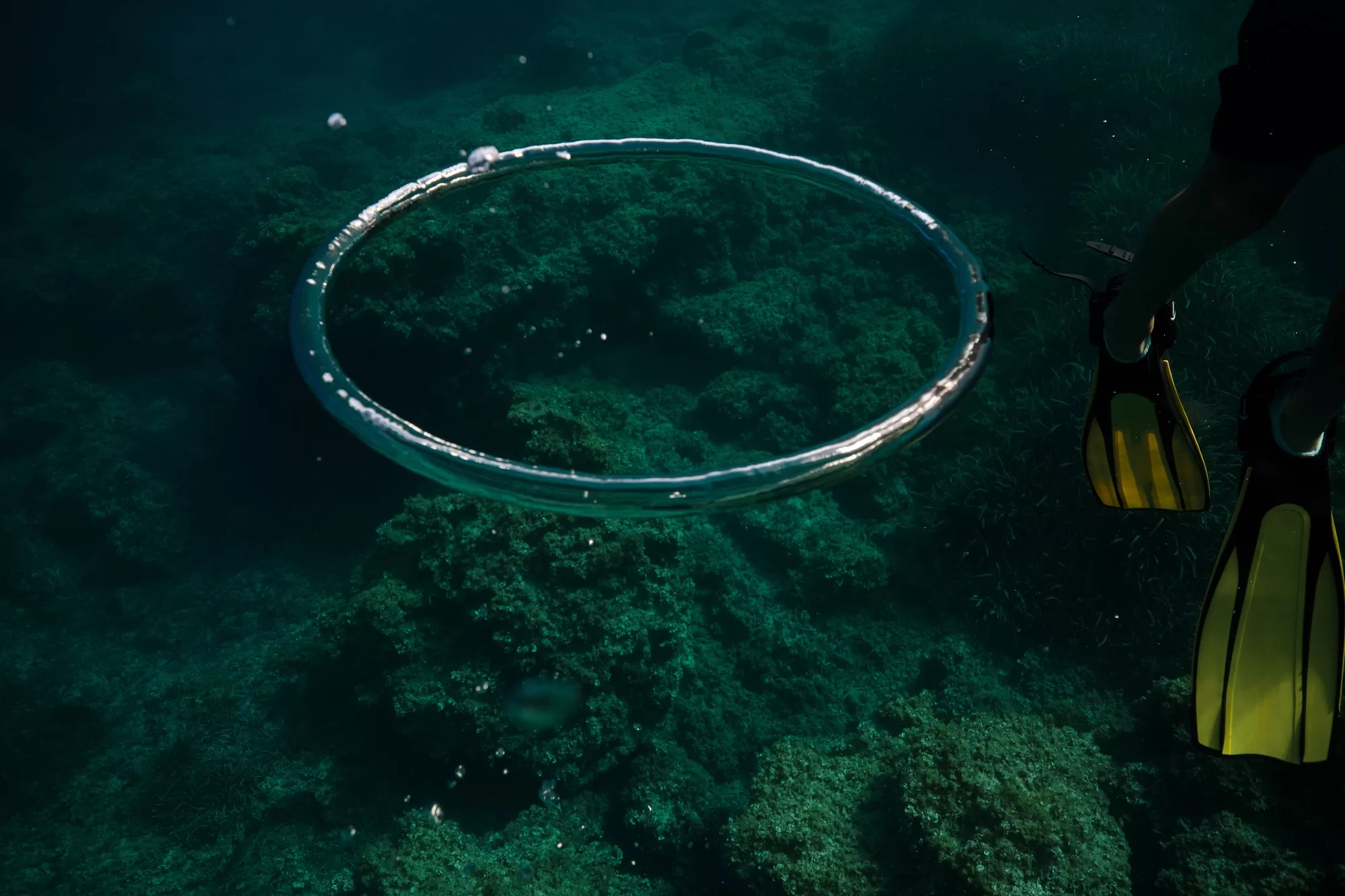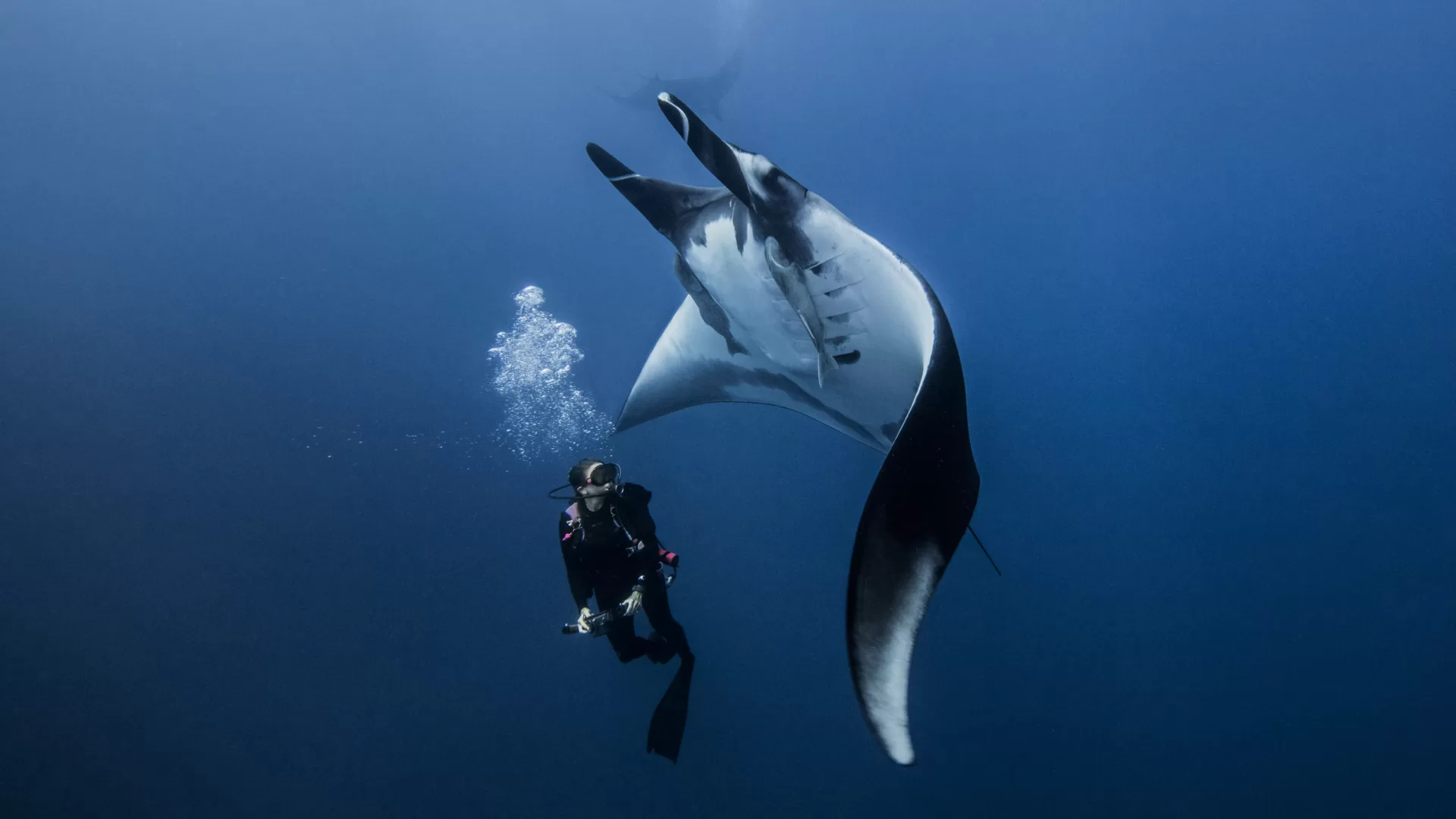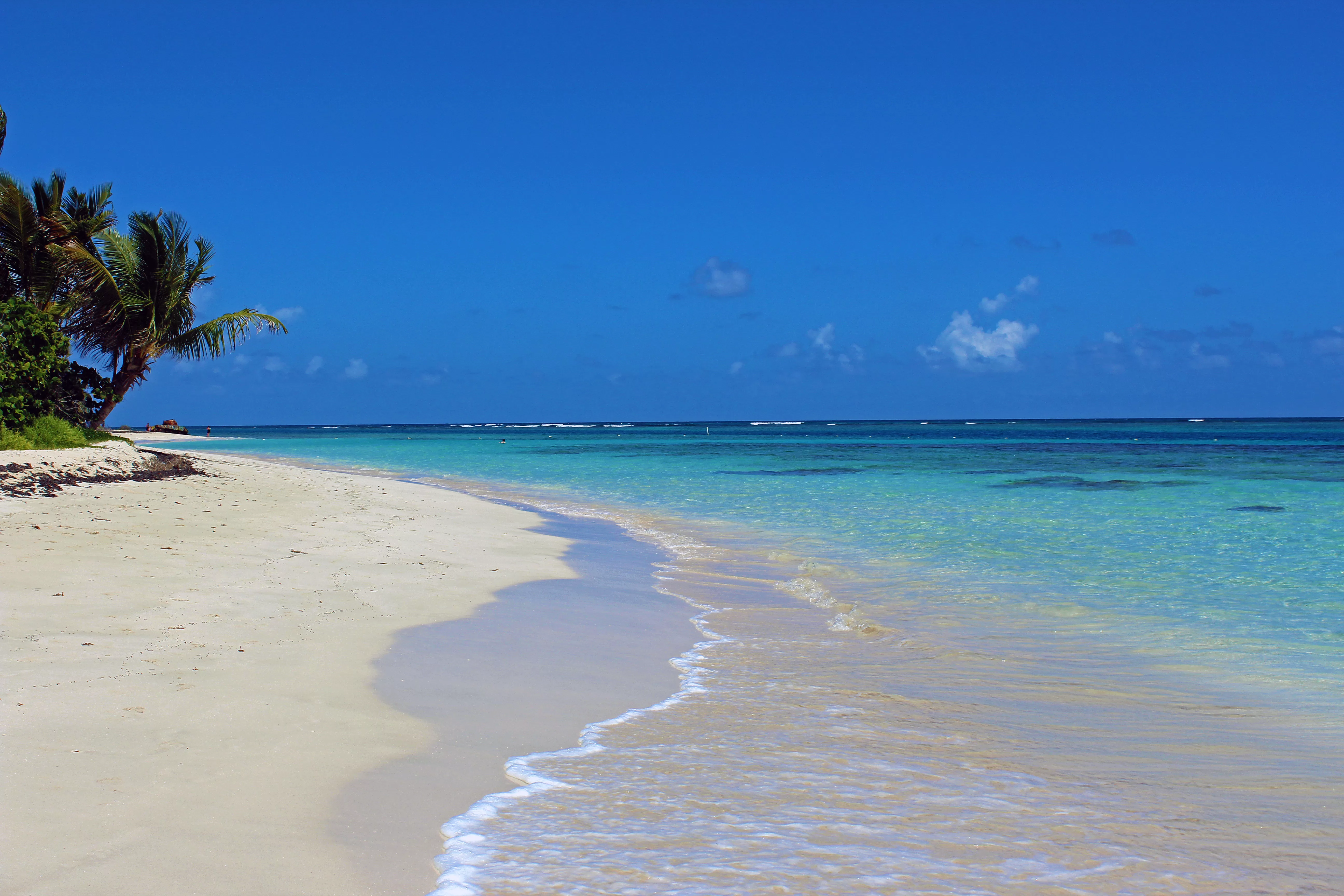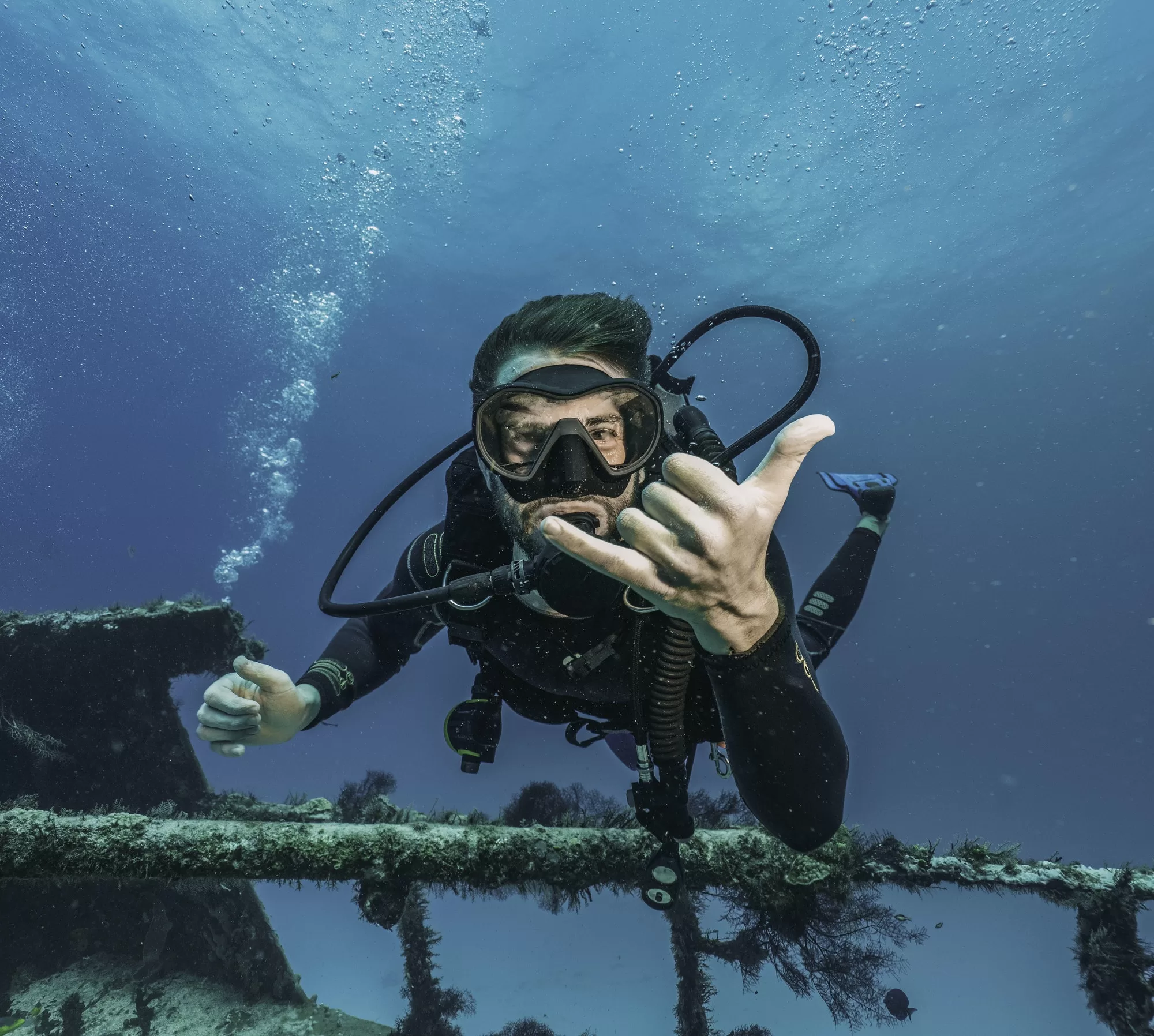As a travel diver and an enthusiast of the underwater world, I’ve always been captivated by the myriad of wonders that lie beneath the surface of the water. It’s a place where the mundane rules of the land don’t apply, and every dive holds the promise of something extraordinary. Among the many marvels of this aquatic realm, one phenomenon that never ceases to amaze me is the art of blowing bubble rings underwater.
Bubble rings are more than just a fun trick; they are a mesmerizing display of fluid dynamics in an environment totally alien to our everyday experience. When perfectly executed, these rings form a vortex that maintains a captivating, almost mystical shape as it elegantly travels through the water. The visual appeal of these swirling circles of air is undeniable – they’re like underwater smoke rings, defying gravity and expectation in equal measure.
But here’s the good news: creating these underwater spectacles isn’t as challenging as it might seem. With a bit of practice and the right techniques, even novice divers can master this enchanting skill. In this blog, I’ll guide you through everything you need to know about bubble rings – from their scientific basis to practical tips on how to make them yourself. So, take a deep breath (metaphorically for now), and let’s dive into the captivating world of underwater bubble rings.
Understanding Bubble Rings
To truly appreciate the beauty of bubble rings, it’s essential to understand what they are and how they form. At its core, a bubble ring is a circular vortex of air, created underwater. When a pulse of air is expelled in a sharp, circular motion, it creates a spinning column of water, trapping the air in a ring-shaped bubble. This phenomenon is a beautiful interplay of physics, showcasing principles of fluid dynamics and buoyancy in a visually stunning manner.
Historically, bubble rings might not have had significant cultural references, but in the modern world of diving and underwater photography, they have gained an almost iconic status. They are not just a display of a diver’s skill but also a testament to the playful side of nature’s physics. In certain cultures, these rings have also been seen as symbols of unity and perfection, their unbroken form representing continuity and wholeness.
Visually, bubble rings are nothing short of enchanting. Capturing this phenomenon in photographs or videos has become a coveted goal for underwater photographers. The aesthetic appeal of these rings as they gracefully ascend towards the surface, maintaining their shape against the odds, is a sight to behold. It’s like watching a piece of ephemeral art being created and dissolved in front of your eyes. In the following sections, I will delve into how you can create your own bubble rings and capture these fleeting moments of underwater magic.
Preparing to Blow Bubble Rings
Before you attempt to create your first bubble ring, it’s crucial to ensure you’re comfortable and safe in the underwater environment. This comfort doesn’t just stem from being able to swim well; it’s about being at ease with the idea of being submerged, understanding your surroundings, and being in control of your movements. This level of comfort is key because blowing bubble rings requires a calm and steady approach – any anxiety or hurried movements can disrupt the delicate balance needed to create these perfect circles of air.
Basic swimming skills are, of course, a prerequisite. You should be proficient in controlling your buoyancy, maintaining a stable position underwater, and managing your breath. If you’re new to diving or snorkeling, consider taking a few lessons to build these fundamental skills. Even experienced swimmers might find that the underwater environment presents unique challenges, so it’s important to adapt your skills accordingly.
Safety should always be your top priority. Never attempt to blow bubble rings without a buddy or in an area where you feel unsure of your abilities. Be mindful of your air supply if you’re using scuba gear, and always be aware of your surroundings, including depth and current. Remember, no photograph or moment of underwater glory is worth compromising your safety.
The choice of environment is another important factor. While you can practice blowing bubble rings in a swimming pool, the open water offers a more authentic and exhilarating experience. Pools are great for beginners due to their controlled environment, but the open water challenges you with varying depths and natural currents. Whichever location you choose, ensure it’s a safe and comfortable spot for your skill level.
In the accompanying visuals, you’ll see diagrams and photos highlighting ideal locations for practicing this skill. Look for calm, clear waters with minimal current. We’ll also showcase the appropriate safety gear to use, ensuring that your underwater bubble ring adventure is both safe and enjoyable.
Step-by-Step Guide to Blowing Bubble Rings
Now that you’re comfortable and safe in the water, it’s time to learn the actual technique of blowing bubble rings. This skill, while appearing simple, requires a blend of precise body positioning, controlled breathing, and a bit of practice. Let’s break it down into manageable steps.
1. Body Positioning:
- Start by finding a stable and comfortable position underwater. If you’re in a pool, you might want to stand or kneel on the bottom. In open water, you’ll need to float neutrally buoyant.
- Align your body horizontally, facing upward towards the surface. This position allows you to expel air directly upwards, which is crucial for forming rings.
- Relax your body and keep movements smooth and controlled. Sudden or jerky movements can disrupt the formation of the bubble ring.
2. Controlling Your Breathing:
- Take a deep breath and hold it for a moment. This step is about ensuring you have enough air to expel, but not so much that you feel uncomfortable.
- Practice controlled breathing. The key is to release just the right amount of air. Too little, and your ring won’t form; too much, and it will break apart.
3. The Technique of Blowing Rings:
- Purse your lips as if you are about to whistle or blow out a candle. The size of the opening in your lips will determine the size of your bubble ring.
- Push a small amount of air out of your mouth in a quick, controlled burst. The movement should come from your diaphragm, not your cheeks.
- As you expel the air, make a small upward flick with your tongue. This motion helps to shape the air into a ring as it leaves your mouth.
Common Mistakes and How to Avoid Them:
- Releasing Air Too Slowly: This results in a stream of bubbles rather than a ring. Practice quick, controlled bursts of air.
- Incorrect Body Position: If you’re not horizontal, the rings will not travel upward correctly. Focus on maintaining the right posture.
- Too Much Movement: Stay as still as possible. Excessive movement can disrupt the water around you and break the ring.
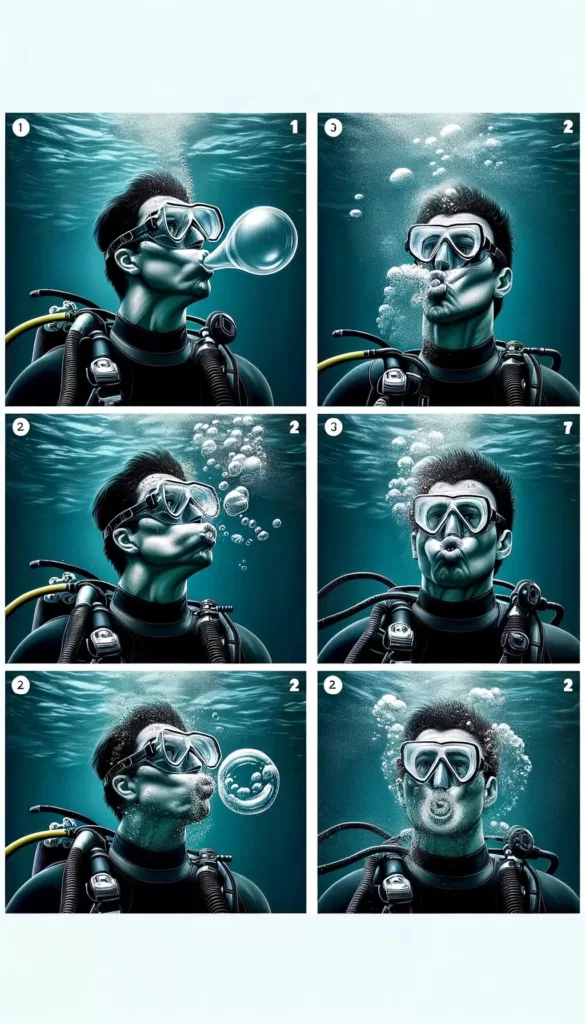
Visuals:
- Accompanying this section are step-by-step images or illustrations. These visuals will guide you through each stage of the process, from the correct body position to the exact moment of releasing the air.
Remember, like any skill, blowing bubble rings takes practice. Don’t get discouraged if your first few attempts don’t yield perfect rings. With each try, you’ll get a better feel for the right amount of air and the precise movements required. Keep practicing, and soon you’ll be creating beautiful underwater vortexes with ease.
